Search engine optimization (SEO) helps businesses of all industries, sizes, and backgrounds get more recognition in search engines. But what are the types of SEO, and which ones should you try to get the most impact? Find out now!
Summary
Meet the types of search engine optimization, and then keep reading to learn more!
| Type of SEO | Classification | About |
| On-page SEO | Core | Targets on-site optimizations, like:
|
| Off-page SEO | Core | Targets off-site optimizations, like:
|
| Technical SEO | Core | Targets on-site optimizations, like:
|
| Image SEO | Specialized | Improves visibility in image-based results via core SEO types |
| Video SEO | Specialized | Improves visibility in video-based results via core SEO types |
| Local SEO | Specialized | Improves visibility in localized results via:
|
| International SEO | Specialized | Improves visibility in country-specific results via core SEO types |
| Ecommerce SEO | Specialized | Improves visibility in ecommerce-focused results via:
|
| Enterprise SEO | Specialized | Improves visibility in competitive search results via core SEO types |
| YouTube SEO | Specialized | Improves visibility in YouTube search results |
| Voice SEO | Specialized | Improves visibility in voice-generated results via core SEO types |
| AI search SEO | Specialized | Improves visibility in AI-generated results via core SEO types |
| Black-hat SEO | Methodology | Uses unethical SEO practices for core and specialized SEO types |
| White-hat SEO | Methodology | Uses ethical SEO practices for core and specialized SEO types |
What are the different types of SEO?
The different types of SEO include on-page, off-page, and technical SEO. These types expand into different areas of SEO, including local, ecommerce, international, and enterprise SEO, as well as different SEO practices, like black-hat and white-hat SEO.
What are the types of SEO services?
The types of SEO services vary. However, the most common SEO services include:
- Full-service services, which include on-page, off-page, and technical SEO.
- Local SEO services, which improves visibility in localized search results.
- Ecommerce SEO services, which improves visibility in shopping results.
- SEO audit services, which evaluates a site’s existing SEO.
SEO services can become specialized, though, with technical SEO services as an example.
14 types of SEO (and how to optimize for them)
Explore the types of SEO, and how to target them in your SEO strategy:
1. On-page SEO
On-page SEO relies on optimizations made on your website to increase your site’s ranking in search engines. You have complete control over on-page SEO tactics, as they all occur on your website.
Examples of on-page SEO include:
- Internal linking
- Content optimization and creation
- Keyword integration
- Images and videos
Who needs on-page SEO
All businesses should use this type of SEO to get results for their campaign. Since you have the most control over on-page SEO factors, you should try to focus on these and get your site up to standards. Plus, many of them are free to do, so you can change them on your own.
How to do on-page SEO
Since on page SEO comprises everything you do on your website, there are plenty of ways to use it. In general, you should focus on the following points.
Create content
Content is the backbone of any website. Without content, your website would be a blank page!
If you are wondering why your website doesn’t drive leads, you can start by creating content for various purposes to capture leads from all stages of the sales process. Be informational and educational while also providing all the details they need on your products and services.
Here are some example content types:
- Product pages
- Blog posts
- “About us” pages
- Service pages
For example, an education business could create the following:
- Product or service pages for its offerings, like tutoring and study guides
- About page to explain the company’s beginnings, purpose, and value
- Blog posts to attract top-of-the-funnel traffic, like how to manage test anxiety
Need help with content? Don’t worry! SEO content marketing services can help with content strategy, development, optimization, and more.
Improve your navigation
Having a navigable website will make it easier for users and search engines to move around your website. You can encourage people to stick around and show search engines that your website is helpful to users.
A clear, organized header with simple navigation is the best option for most businesses:

This organization will vary depending on your industry.
Add images and videos
Images and videos are key to spicing up your content, and they help boost SEO. Having effective images on your page helps with overall design, and Google will reward you as people linger and look at your pages more.
You can use images to break up content in blog posts or even to intrigue with buttons and links:

Use keywords effectively
Your keywords tell Google — and users — what your website is about. You should spend time researching and adding keywords to your pages to help you rank for relevant terms.
Adding keywords to your title and content can help Google pull the right pages:
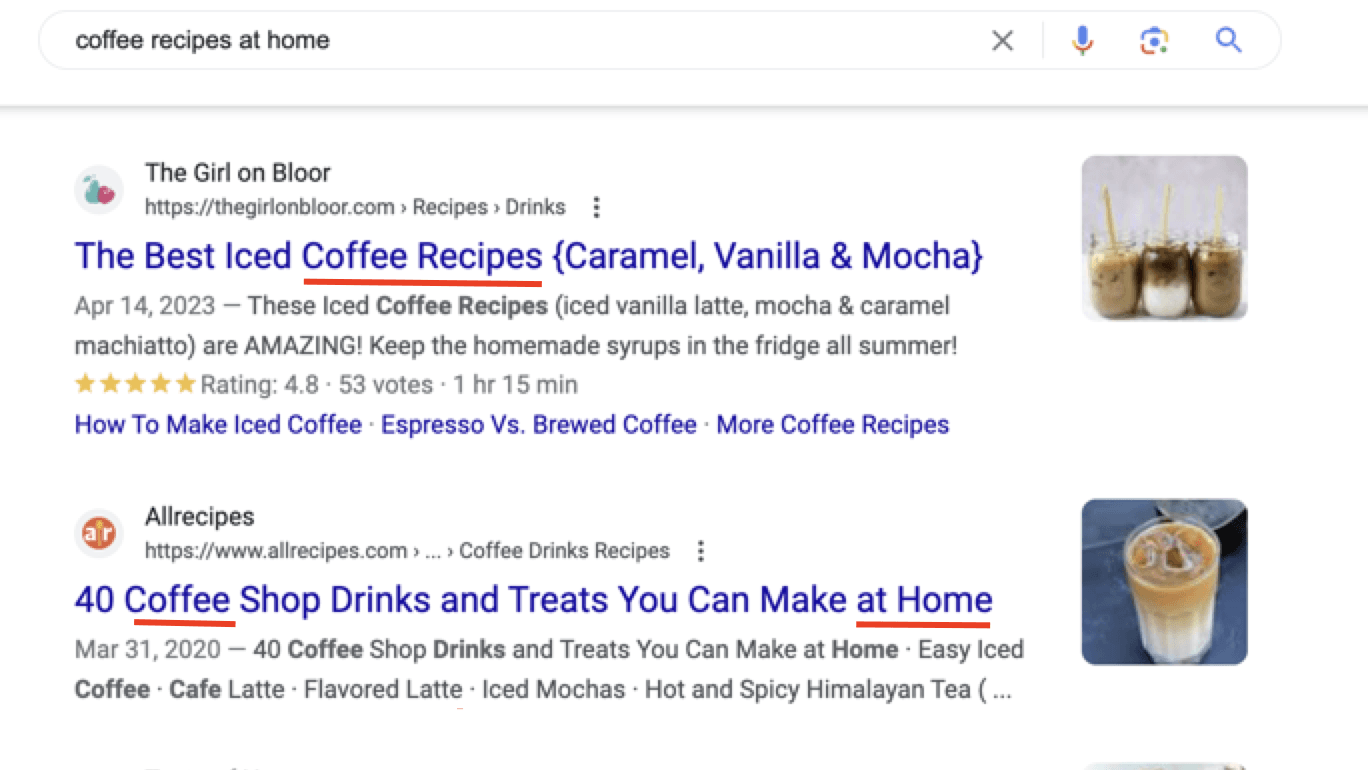
Shoot to have your keyword in your title, meta description, and content.
Need help with on-page SEO? Don’t worry! On-page SEO services can help with internal linking, keyword research and strategy, technical SEO audit, and more.
2. Off-page SEO
Off-page SEO relies on optimizations outside of your website to boost your rankings in the search engine results pages (SERPs). You have less control over off-page SEO tactics since they are outside of your website’s domain, and some pertain to other businesses.
Examples of off-page SEO include:
- Backlinks
- Social media
- Content marketing
- Guest content
Who needs off-page SEO
All businesses should try to boost their off-page SEO however possible. Off-page SEO is key to making your website appear credible to Google. Backlinks specifically can increase your credibility and give Google a reason to boost your rankings in the SERPs.
How to do off-page SEO
Off-page SEO encompasses fewer changes on your end than on-page SEO. Below are a few ways of using it that you can focus on:
Share your site through social media
Social media is one type of off-page SEO that you have control over. You can use social media services or start your own social campaign that directs users to your website, whether to your product pages or something else.
Even adding a link to your website in your bio can help users find you and shop:
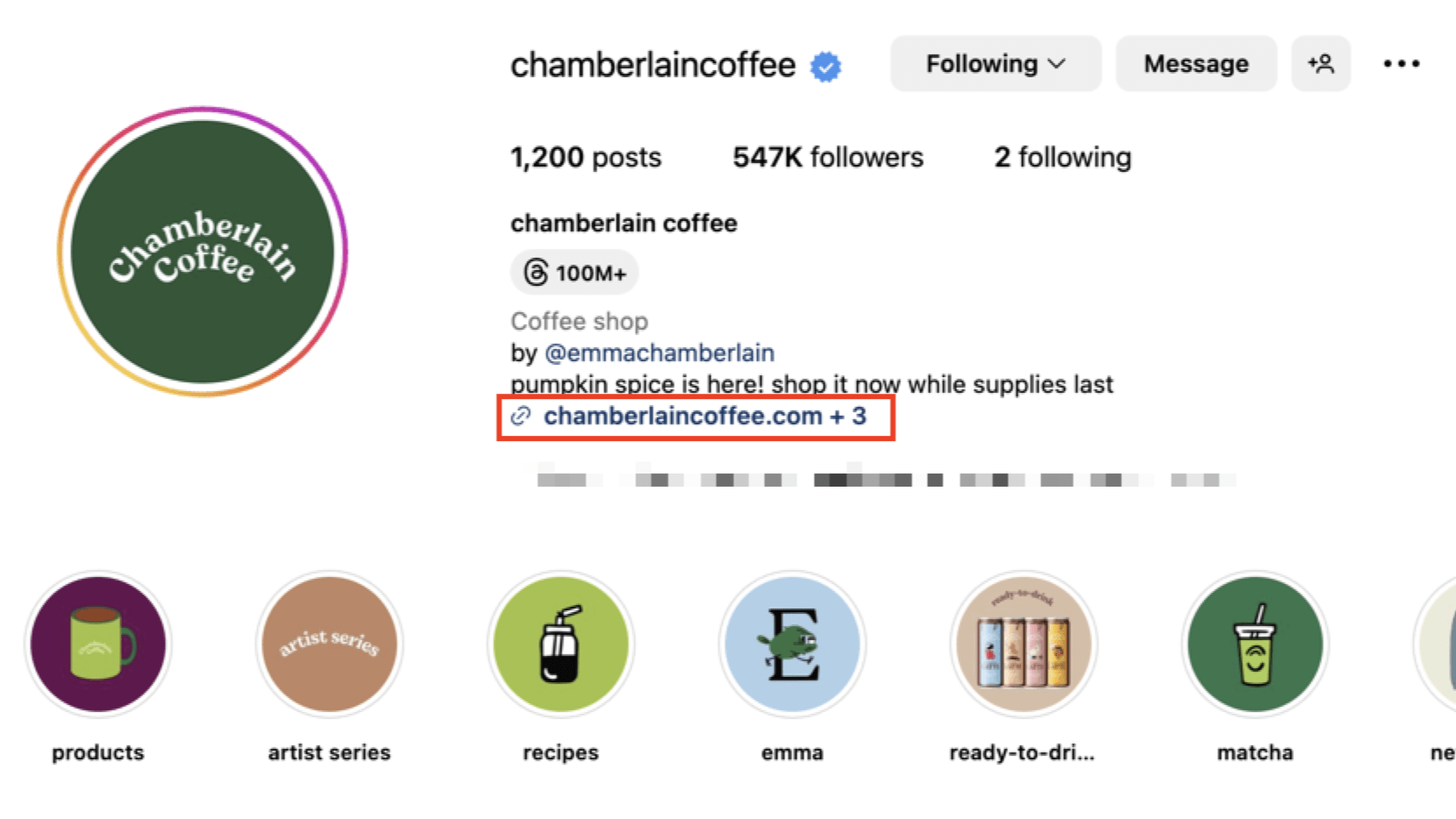
Earn backlinks from other websites
Backlinks are critical for ranking. Backlinks are when another reputable website links to your content. You want to get as many backlinks as you can, but quality matters over quantity.
To get backlinks, you could:
- Find broken links on other sites and ask them to replace it with a link to you
- Write guest content
- Create content that garners links naturally
3. Technical SEO
Technical SEO is a set of website and server changes that make it easier for crawlers and users to access your site. This type of SEO incorporates different backend approaches that affect how users interact with your website.
Who needs technical SEO
Again, since technical SEO is so crucial to improving your site’s function, every business needs to incorporate some strategies for their website. Now, you don’t need to be a tech professional to incorporate technical SEO — there are plenty of technical SEO tools and guides to help you.
Plus, if you still feel stuck, you can hire an SEO or web developer expert to help you with technical SEO services.
How to do technical SEO
Technical SEO will only encompass backend changes that make your site better. Here are some ways to use it in your plan:
Submit a sitemap to Google
As we discussed, navigation is critical to SEO. With that, you can create something called a sitemap — a detailed map of all the pages on your website. There are two types — HTML and XML.
An HTML sitemap is just a page with links to all other pages on your site for users to access:
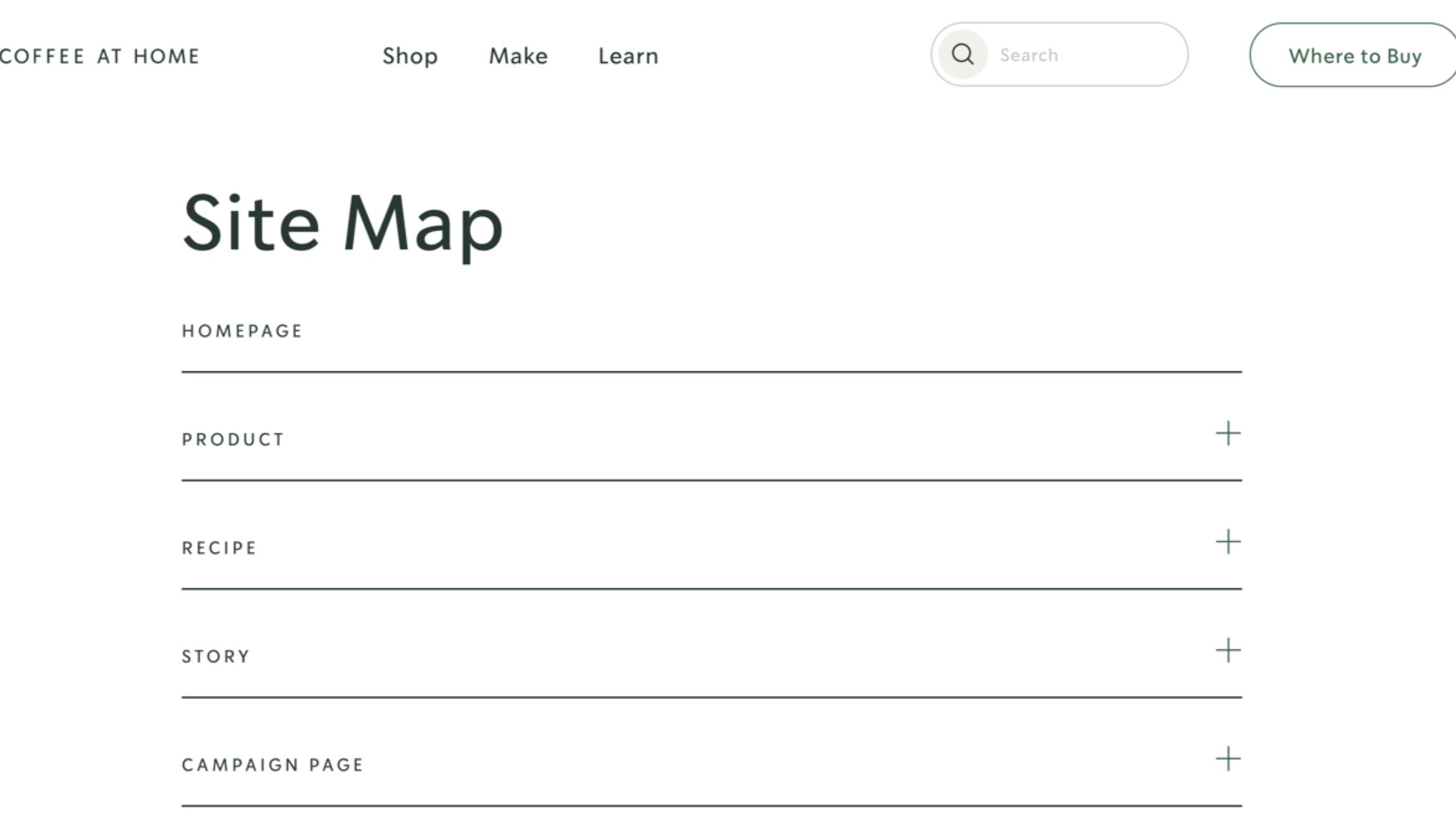
The more relevant one is an XML sitemap, which is a file that outlines every page that exists on your site. You can create an XML sitemap and submit it to Google to help crawlers find and index your pages, giving them a better chance at ranking.
Use meta descriptions on all pages
Meta descriptions are HTML code that describes what your page is about in the SERPs:

These descriptions help users understand what they’re clicking on before they do, which boosts user experience (UX) and better matches search intent. Google also uses these descriptions to see what your page is about and rank it accordingly.
Improve your page speed
Page speed is how fast your page loads. Users don’t want to wait around for pages and images to load, and Google will penalize slow-moving sites.
There are a few factors that can go into your page speed, but compressing your images and making sure you use a quality server are essential. Site speed tools like Google’s PageSpeed Insights let you check your page speed for free. If you’re wondering how to use Google’s PageSpeed Insights for SEO, all you need to do is navigate to the tool, enter your website, and hit analyze.
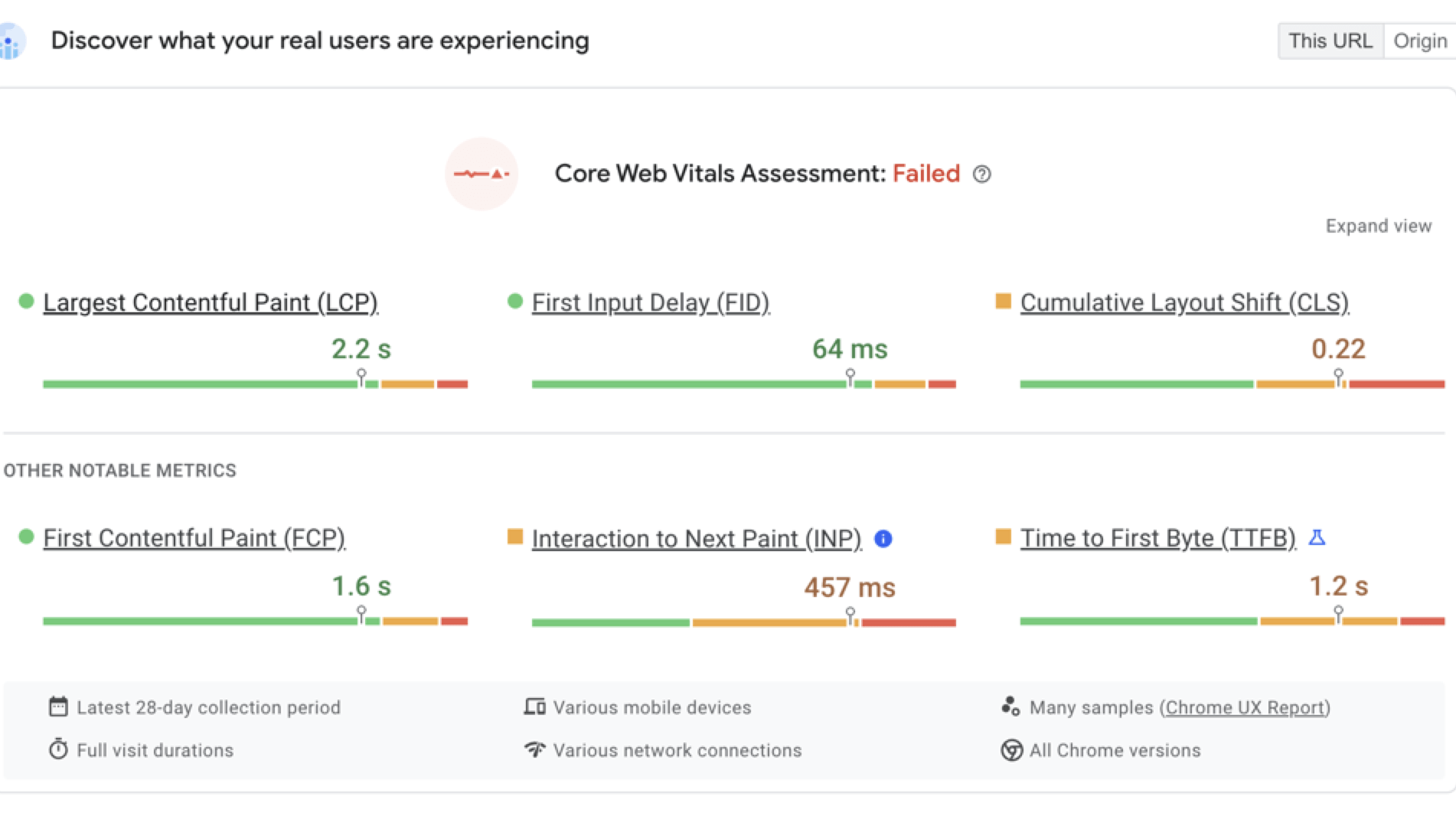
4. Image SEO
Overview: Image SEO is the process of optimizing your website’s visual content for image or traditional search results. This type of SEO is also important for accessbility for users with slower Internet speeds or a visual impairement.
Optimizations: Optimize your visual content by using a PNG or WebP image format and descriptive filename. Use free image compression tools like TinyPNG, and add descriptive alt text to improve image accessibility.
5. Video SEO
Overview: Video SEO is the process of optimizing videos embedded on your website for search. In some cases, this type of search engine optimization can overlap with YouTube SEO, but is not exclusive to YouTube.
Optimizations: Common optimizations for video SEO include adding structured data, video transcripts, and a video sitemap. In some cases, companies will evaluate where they host their videos, like Wistia vs. YouTube.
6. Local SEO
Local SEO is specific to smaller companies or those that only serve one geographic region. Companies use SEO to reach customers and leads in their area without appealing to those outside of their service frame.
Who needs local SEO
Local SEO is for companies who want to rank for specific areas. Many small businesses use local SEO services to help them stand out from the competition in their city. An example is local SEO for recreation businesses such as arcades or campgrounds. Local SEO is important for only finding leads in your area that can take advantage of your products or services.
Another example is using local SEO for heavy equipment distributors who want to sell machines to potential customers near them.
How to do local SEO
Finally, how can you use local SEO if you need to reach a particular audience? Here are a few ways:
Do local keyword research
Local keywords target a specific area or use location metrics to see where a user is searching. Google wants to show the most relevant results, so it will match the pages to the location:
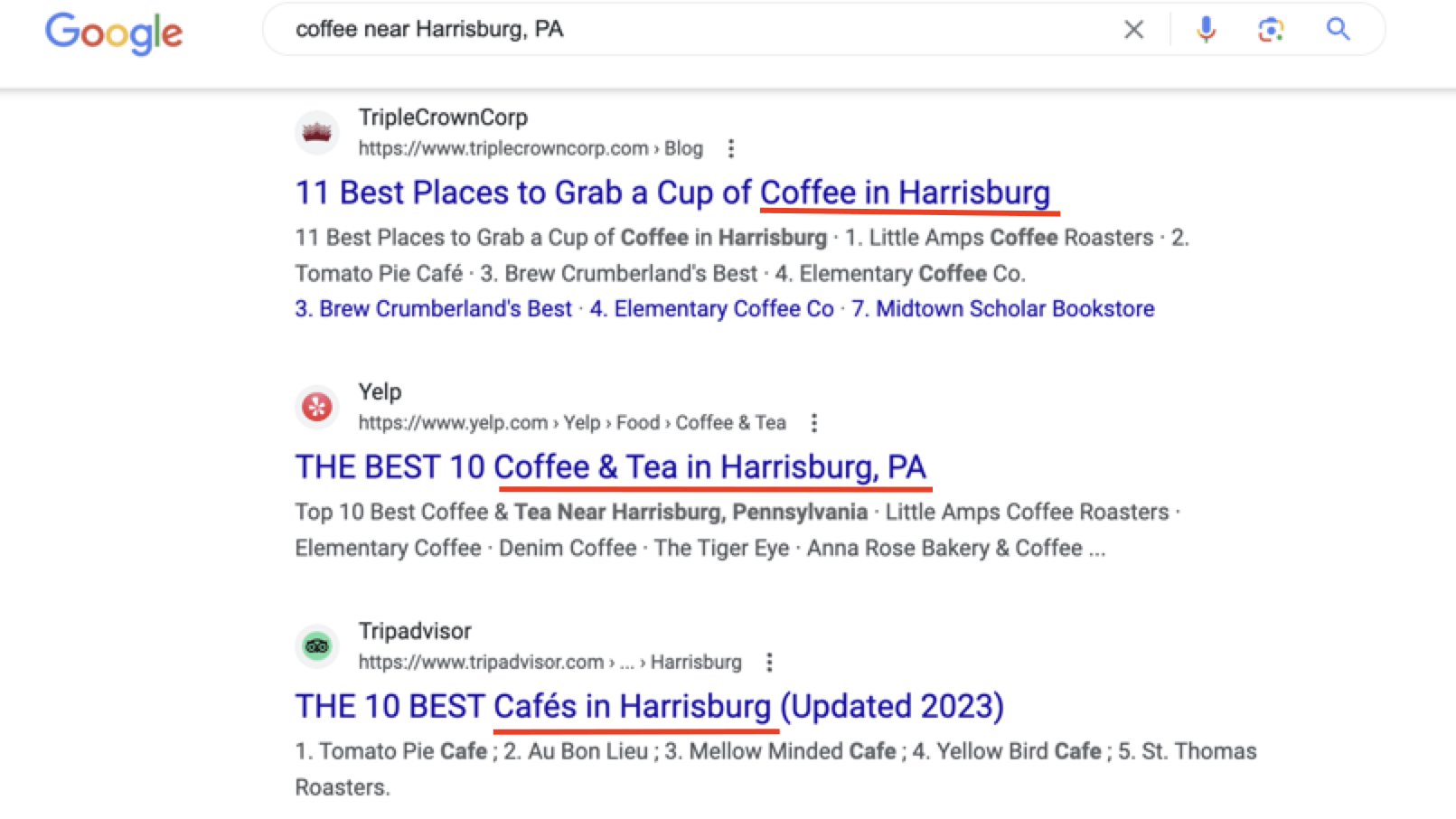
Incorporate local keywords into your website and pages to show Google what area you serve. The use of keyword research tools from SEMRush, Ahrefs, Moz, Keyword Generator, Soovle, among others, allows you to identify relevant local terms that align with your target location.
These tools provide valuable insights into the search volume and competitiveness of local keywords, helping you tailor your content for better visibility in location-based searches.
Create your Google Business Profile
A Google Business Profile helps you land in local listings and give users the most important information about your company right in the SERPs. With this setup, you will appear in local results like this:
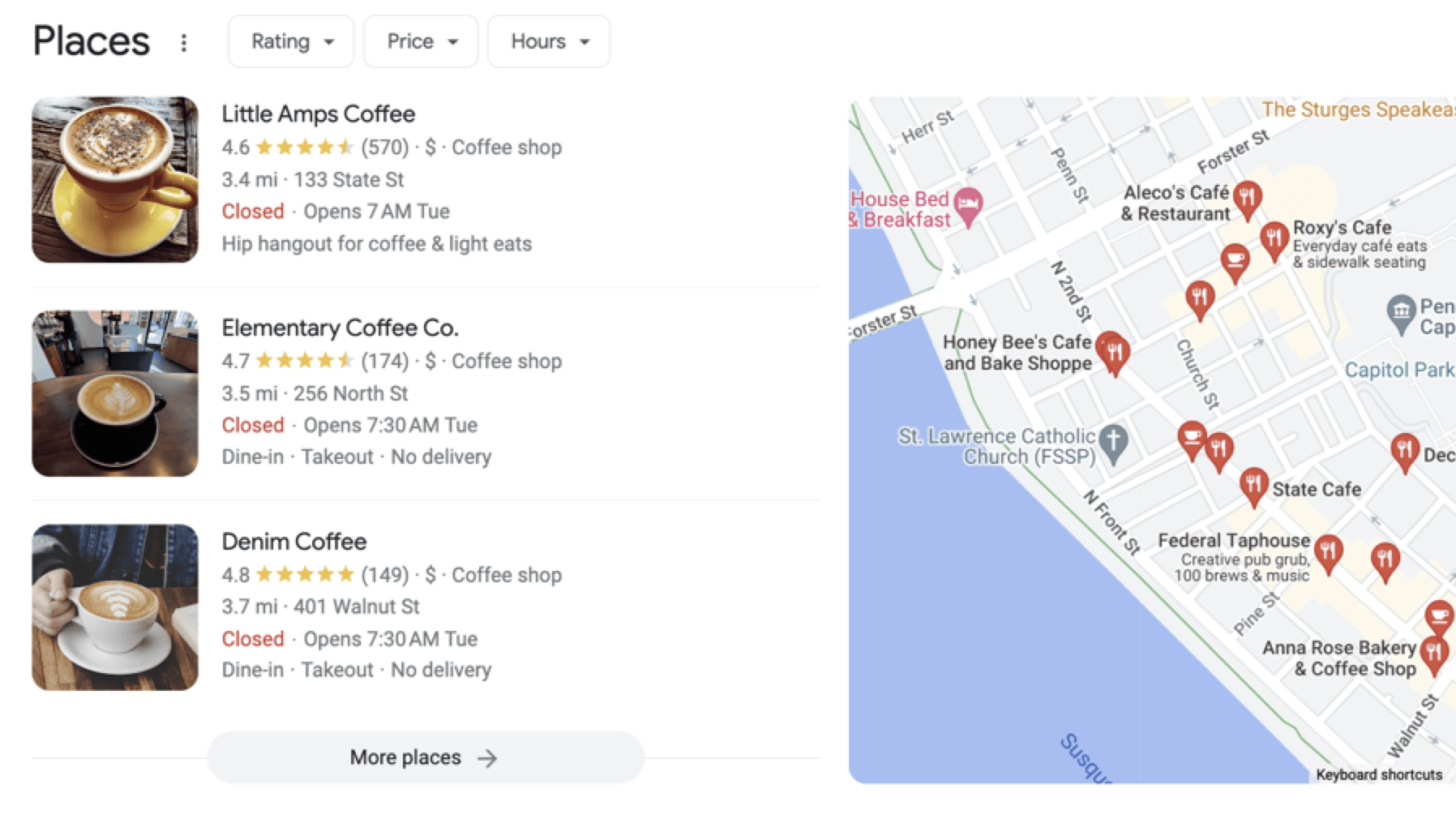
Think of this profile as the online listing for your website. Users might not make it to your website, but they can see your phone number, reviews, hours of operation, and more, all from one place.
Publish local-oriented content
Finally, the last way to use local SEO is to create locally-focused content. Write pages about other businesses and events in the area, or talk about your favorite spots in the community:

These pages will:
- Help visitors as they research the area
- Let you connect with other businesses
- Show readers that they can trust your opinion
- Make you seem more accessible
7. International SEO
Overview: International SEO gets your website discovered across countries, often by serving country-specific experiences and content. Most companies partner with SEO consultants when exploring this type of SEO.
Optimizations: You’ll often complete optimizations like the following for international SEO: Updating hreflang tags, translating or converting content to other languages, and developing site structure.
8. Ecommerce SEO
Overview: Ecommerce SEO grows your visibility in shopping-based search results. These results can include the “Shopping” tab on Google Search, as well as the traditional search results.
Optimizations: Optimizations for ecommerce SEO include the core types of SEO, plus image SEO. Your optimizations will often include using Google Merchant Center, schema markup, and images to reach users.
9. Enterprise SEO
Enterprise SEO is specific to companies who need a large-scale approach to their website. Enterprise SEO accounts for the different types of SEO listed above and applies them to companies that reach hundreds or thousands of clients on a national level.
Who needs enterprise SEO
Enterprise SEO services are for large-scale companies that serve clients across a national or regional level. Since you are trying to reach as many leads as possible, you need a particular strategy that accounts for a wider audience that regular SEO might not consider.
How to do enterprise SEO
So, how can you use enterprise SEO? Here are a few different ways:
Try content marketing
Content marketing is the process of creating content for all stages of the buyers’ journey. With content marketing, you can build brand awareness and earn more traffic to your website, which helps Google see you as a reliable source of information.
Since you want to capture as many leads as possible with enterprise SEO, you should focus on creating content that appeals to your wide target audience. Some examples include:
- Infographics
- Quizzes and surveys
- Studies and research
- Social media posts
- Newsletters
- Videos
Build an efficient site architecture
Since you likely have an expansive website, you must focus on making it easy to use. Once people land on your site, where will they go? What’s the next move? Think of these questions as you organize your pages.
Site architecture and navigation go hand in hand — with so many pages, you need to be able to find them all easily or search for them.
If you’re looking for professional help for enterprise SEO, consider our research into the best enterprise SEO companies.
10. YouTube SEO
Overview: YouTube SEO grows your visibility on YouTube — the second most-popular search engine. You’ll need to produce content, plus videos to optimize for this type of SEO in digital marketing.
Optimizations: You’ll re-use tactics from the core types of SEO for YouTube SEO, including researching keywords, optimizing title tags, and understanding search intent. Additional optimizations include thumbnail design, closed captions, and channel completion.
11. Voice SEO
Overview: Voice SEO improves your visibility within voice-generated search results, whether when using a search engine directly or a voice assistant, like Google Assistant. This type of SEO is helpful for companies that help users on-the-go, like recipe sites.
Optimizations: Common optimizations for improving voice search visibility include targeting featured snippets and conversational queries, as well as practicing local SEO (if targeting voice searches with a local element, like ‘what’s the closest pizza shop near me?’).
12. AI search SEO
Overview: AI search SEO, also called generative engine optimization (GEO), improves your visibility in AI-generated search experiences, like AI Overviews or AI search engines like Perplexity.
Optimizations: Effective optimizations for AI search include white-hat SEO practices, plus improving content readability, value, and trustworthiness. You can learn more about AI search in our AI Overviews ranking factors guide!
13. Black-hat SEO
Overview: Black-hat SEO uses unethical search engine optimization techniques to improve organic visibility. While these practices can promise quick wins, you risk long-term risk to your SEO performance, as well as how users perceive your business.
Optimizations: Common black-hat optimizations include keyword stuffing, cloaking, link farms, and other unethical practices. Do not resort to black-hat SEO — instead, focus on long-term growth with white-hat SEO.
14. White-hat SEO
Overview: White-hat SEO uses recommended, user-focused best practices to optimize a site’s organic visibility. Whether you’re practicing on-page SEO, local SEO, or YouTube SEO, you’ll want to future-proof your strategy with white-hat SEO.
Optimizations: Optimizations that align with white-hat SEO include producing helpful content, website structures, images, and more. Focus on benefiting the user, and you’ll often align with white-hat SEO.
FAQs
Let’s answer a few questions on the different types of SEO (for more FAQs, check out our SEO FAQs resource):
What are the four areas of SEO?
The four areas of SEO are often credited as on-page SEO, off-page SEO, technical SEO, and local SEO. Together, these types of search engine optimization grow your visibility in organic search results, which can generate localized results.
Which type of SEO is best?
The best type of SEO is white-hat SEO. As a methodology, white-hat SEO influences everything you do within search engine optimization, whether you’re optimizing for local or video search results.
How can I check my on-page and off-page SEO?
You can use SEO Checker, our free SEO Checker tool that gives you a complete audit of your site’s current search engine optimization (SEO) performance and a custom report with all the details such as: on-page and off-page SEO, technical SEO, and local SEO. Understand your site’s SEO score, performance and get custom recommendations for improving your rankings and traffic with this free tool.
Grow your rankings with the different types of SEO
Whether you’re looking to grow your rankings yourself or with professional help, WebFX (the team behind SEO.com) is here to help:
- For DIY SEO: Track rankings, investigate competitors, and more for free with SEO Checker.
- For outsourced SEO: Grow rankings (and revenue) with SEO experts in your industry with our SEO services.

$3bn+
revenue driven for clients



Add WebFX to your content marketing toolbox today
Get SEO ProposalTable of Contents
- Summary
- What Are the Different Types of SEO?
- What Are the Types of SEO Services?
- 14 Types of SEO (and How to Optimize for Them)
- 1. On-page SEO
- 2. Off-page SEO
- 3. Technical SEO
- 4. Image SEO
- 5. Video SEO
- 6. Local SEO
- 7. International SEO
- 8. Ecommerce SEO
- 9. Enterprise SEO
- 10. YouTube SEO
- 11. Voice SEO
- 12. AI Search SEO
- 13. Black-hat SEO
- 14. White-hat SEO
- FAQs
- What Are the Four Areas of SEO?
- Which Type of SEO is Best?
- How Can I Check My On-page and Off-page SEO?
- Grow Your Rankings with the Different Types of SEO
$3bn+
revenue driven for clients



Add WebFX to your content marketing toolbox today
Get SEO Proposal





